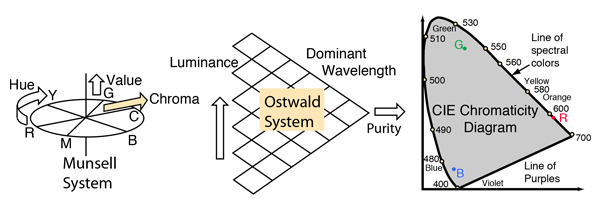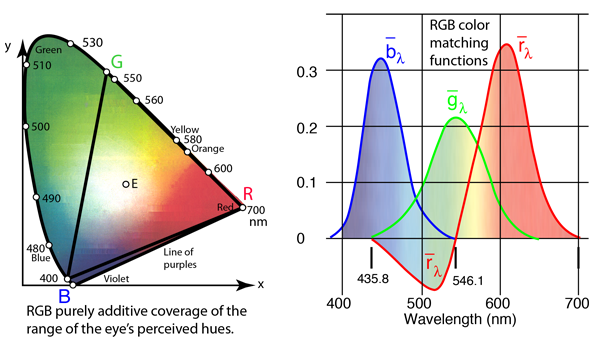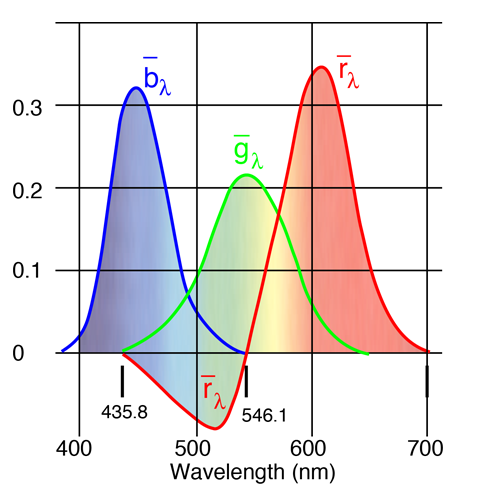Color Space

| The three essential parameters hue, saturation, and brightness can be thought of as defining a color space. |

Using these three parameters or attributes to define a color, it is convenient to think of these parameters as forming a "color space" in analogy with three spatial dimensions. Three color "coordinates" would specify a color.
Space can be described by different coordinate systems, and the three most widely used color systems, Munsell, Ostwald, and CIE, describe the color space with different parameters. The Munsell system uses hue, value, and chroma and the Ostwald system uses dominant wavelength, purity, and luminance. The more precise CIE system uses a parameter Y to measure brightness and parameters x and y to specify the chromaticity which covers the properties hue and saturation on a two dimensional chromaticity diagram.
It is also a useful practice to use three primary colors, like blue, green, and red as vectors with which to map color space. If unit amounts of B, G, and R produce white light, then they can be used like unit vectors to define the color space.
Vision concepts
Color vision concepts
Reference
Williamson & Cummins
| HyperPhysics***** Light and Vision | R Nave |


